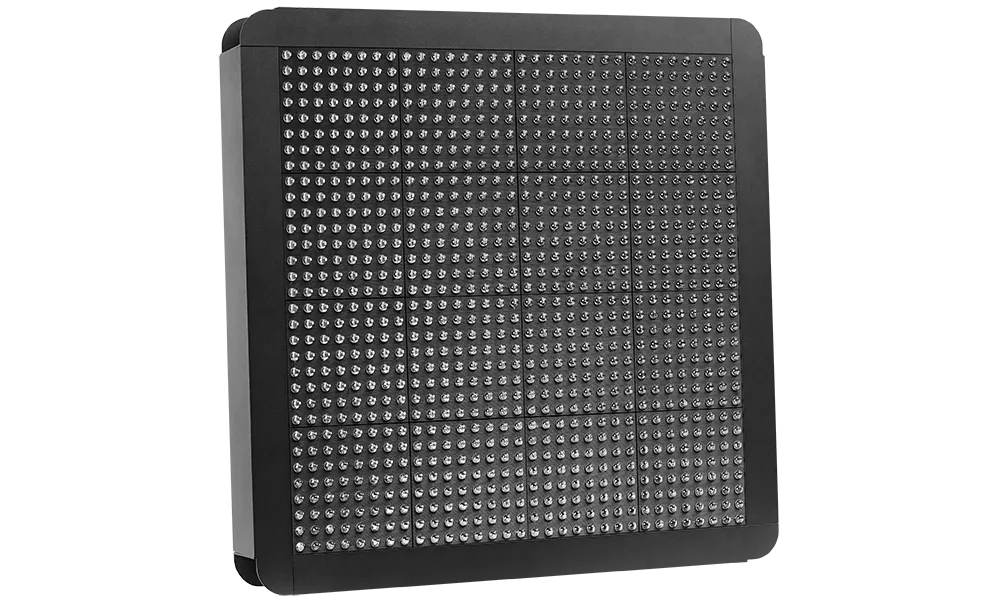First shown at Traffex 2015 in April, production of Siemens’ new Pedestrian Countdown at Traffic Signals (PCaTS) is now fully under way.
PCaTS informs pedestrians how long they have to cross the road after the far-side green man signal has gone out. By providing a visible countdown of the time remaining before the appearance of the red man, PCaTS is intended to give pedestrians a better understanding of the time available to complete crossing, reducing anxiety once the green man is no longer displayed. B
November 30, 2015
Read time: 3 mins
First shown at 136 Traffex 2015 in April, production of 189 Siemens’ new Pedestrian Countdown at Traffic Signals (PCaTS) is now fully under way.
PCaTS informs pedestrians how long they have to cross the road after the far-side green man signal has gone out. By providing a visible countdown of the time remaining before the appearance of the red man, PCaTS is intended to give pedestrians a better understanding of the time available to complete crossing, reducing anxiety once the green man is no longer displayed. Because PCaTS shows exactly how much time is left to cross, pedestrians are less likely to panic or stop in the middle of the road.
According to the company’s head of product management, Keith Manston, the new solution features excellent visual appearance thanks to highly visible double stroke LED digits which ensure maximum visibility for pedestrians using the crossing. “The visual appearance is enhanced by the use of a flat lens which is ‘black masked’ to minimise sun phantom reflections. The unit may also be fitted with a small hood to further enhance the sun phantom performance if required,” he said.
Once installed, PCaTS unit does not require any configuration as it automatically detects the blackout period after two learning cycles of the signals. Timing synchronisation with the blackout period is achieved by the use of direct connections to the red and green signal feeds via totally isolated input circuits, which are designed to ensure they have no impact on controller lamp or safety monitoring. These inputs are also used to sense the dim/bright state of the signals and the PCaTS unit will automatically dim when the associated pedestrian signals dim.
The Siemens PCaTS unit are fully compatible with LV (230V) and ELV (48V) systems and separately powered to accommodate both 24V (AC/DC) and 48V (DC) supply systems without the need for special configuration or link connections.
‘The PCaTS units are completely compatible with Siemens Helios Traffic signals and can be easily fitted as part of a new installation or as a retrofit to an existing site. The units are also able to be easily retrofitted to sites which use the Peek Elite traffic signal range,’ added Manston.
According to Siemens, an off-street public trial of the technology showed that more than 85 per cent of pedestrians felt safer and more confident when crossing the road with a countdown display. PCaTS also helps to smooth traffic for drivers, motorcyclists, buses and cyclists.
PCaTS informs pedestrians how long they have to cross the road after the far-side green man signal has gone out. By providing a visible countdown of the time remaining before the appearance of the red man, PCaTS is intended to give pedestrians a better understanding of the time available to complete crossing, reducing anxiety once the green man is no longer displayed. Because PCaTS shows exactly how much time is left to cross, pedestrians are less likely to panic or stop in the middle of the road.
According to the company’s head of product management, Keith Manston, the new solution features excellent visual appearance thanks to highly visible double stroke LED digits which ensure maximum visibility for pedestrians using the crossing. “The visual appearance is enhanced by the use of a flat lens which is ‘black masked’ to minimise sun phantom reflections. The unit may also be fitted with a small hood to further enhance the sun phantom performance if required,” he said.
Once installed, PCaTS unit does not require any configuration as it automatically detects the blackout period after two learning cycles of the signals. Timing synchronisation with the blackout period is achieved by the use of direct connections to the red and green signal feeds via totally isolated input circuits, which are designed to ensure they have no impact on controller lamp or safety monitoring. These inputs are also used to sense the dim/bright state of the signals and the PCaTS unit will automatically dim when the associated pedestrian signals dim.
The Siemens PCaTS unit are fully compatible with LV (230V) and ELV (48V) systems and separately powered to accommodate both 24V (AC/DC) and 48V (DC) supply systems without the need for special configuration or link connections.
‘The PCaTS units are completely compatible with Siemens Helios Traffic signals and can be easily fitted as part of a new installation or as a retrofit to an existing site. The units are also able to be easily retrofitted to sites which use the Peek Elite traffic signal range,’ added Manston.
According to Siemens, an off-street public trial of the technology showed that more than 85 per cent of pedestrians felt safer and more confident when crossing the road with a countdown display. PCaTS also helps to smooth traffic for drivers, motorcyclists, buses and cyclists.








